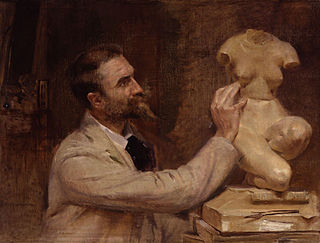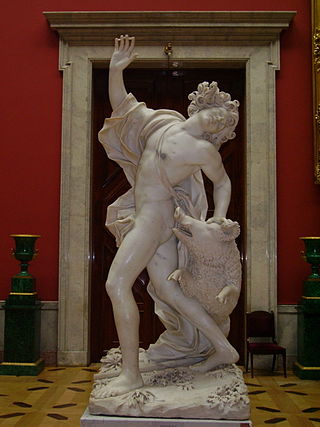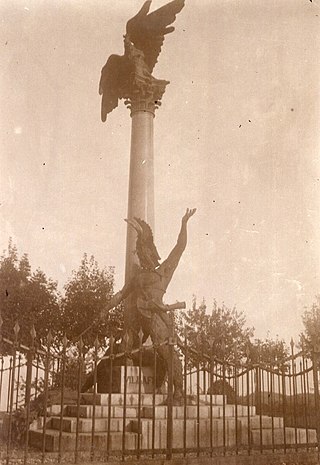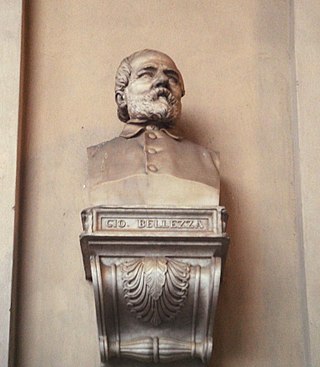Related Research Articles

Edward Onslow Ford was an English sculptor. Much of Ford's early success came with portrait heads or busts. These were considered extremely refined, showing his subjects at their best and led to him receiving a number of commissions for public monuments and statues, both in Britain and overseas. Ford also produced a number of bronze statuettes of free-standing figures loosely drawn from mythology or of allegorical subjects. These 'ideal' figures became characteristic of the New Sculpture movement that developed in Britain from about 1880 and of which Ford was a leading exponent.

Pietro Canonica was an Italian sculptor, painter, opera composer, professor of arts and senator for life.

Vincenzo Vela was a Swiss-Italian sculptor, active mainly in northern Italy.

Leonardo Bistolfi was an Italian sculptor and an important exponent of Italian Symbolism.

Alessandro Ferrero La Marmora was an Italian general who is best remembered for founding the military unit known as the Bersaglieri. Two of his brothers were Alfonso Ferrero La Marmora and Alberto Ferrero la Marmora, the naturalist.

The Monument to Giordano Bruno, created by Ettore Ferrari, was erected in 1889 at Campo de' Fiori square in Rome, Italy, to commemorate the italian philosopher Giordano Bruno, who was burned there in 1600. Since its inception the idea of a monument dedicated to the executed heretic located in Rome, once the capital of the Papal States, has generated controversy between anti-clerical and those more aligned with the Roman Catholic church.

Giuseppe Mazzuoli was an Italian sculptor working in Rome in the Bernini-derived Baroque style. He produced many highly accomplished sculptures of up to monumental scale but was never a leading figure in the Roman art world.

Augusto Rivalta was an Italian sculptor.

Novara railway station is the main station serving the city and comune of Novara, in the Piedmont region, northwestern Italy. Opened in 1854, it forms part of the Turin–Milan and is origin of the lines to Arona, to Alessandria, to Biella, Varallo, Domodossola and Luino, respectively.
Achille Salata was a 19th-century Italian sculptor.

Tancredi Pozzi was an Italian sculptor.

Salvatore Pisani was an Italian sculptor.

Modesto Parlatore was an Italian sculptor and architect.
Ezechiele Trombetta was an Italian sculptor.

Giovanni Spertini was an Italian sculptor.

Vincenzo Alfano was an Italian sculptor.
Alessandro Nelli was an Italian entrepreneur. Nelli was the founder of the Fonderia Nelli, which was the leading sculpture foundry in Rome from 1880 to 1900. He participated to national, international and universal exhibitions, winning several prizes and medals. He exported more than 100 pieces to the 1893 World's Columbian Exposition in Chicago. Nelli made artistic bronzes for several Italian and foreign artists, including several American artists.

Antonio Rossetti or Rosetti (1819–1889) was an Italian sculptor of nudes and figures.

Ercole Rosa was an Italian sculptor.
References
- ↑ Dizionario degli Artisti Italiani Viventi: pittori, scultori, e Architetti., by Angelo de Gubernatis. Tipe dei Successori Le Monnier, 1889, page 294-295.
- ↑ Biography of Melchiorri Archived 2013-12-19 at the Wayback Machine .